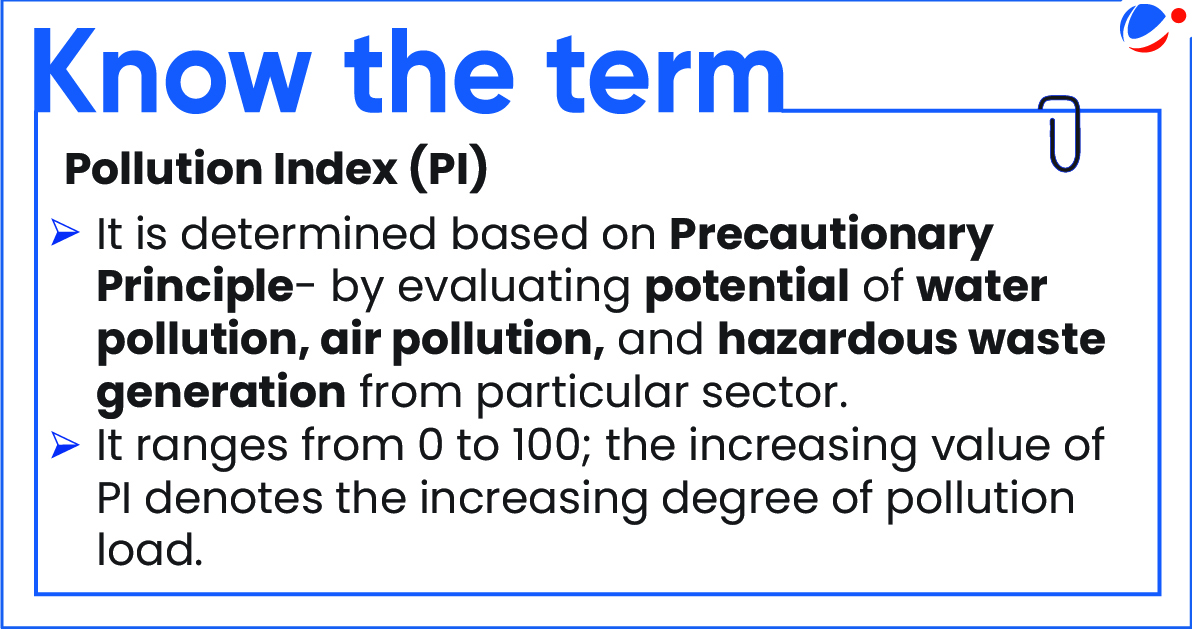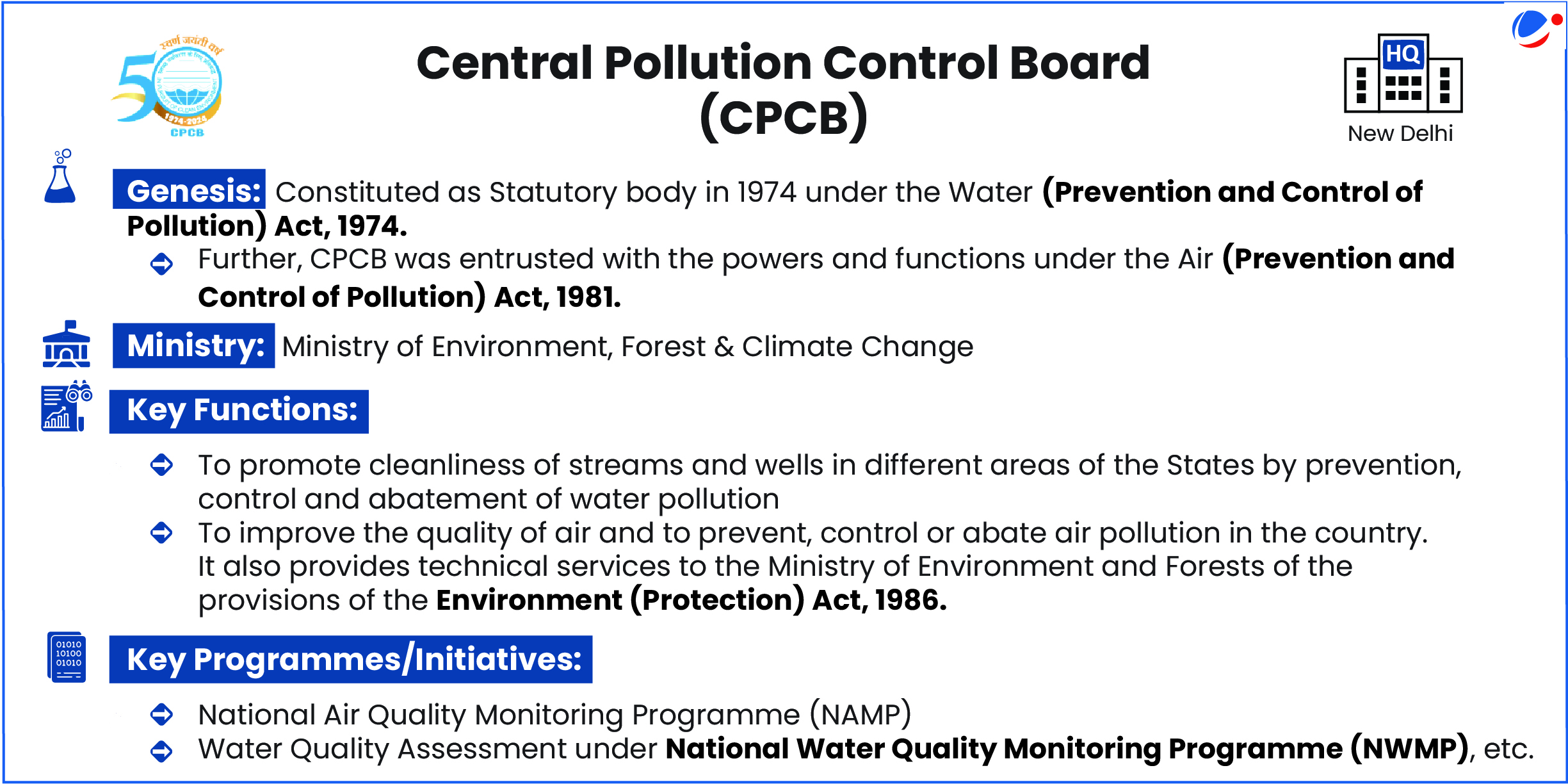Why in the News?
Central Pollution Control Board (CPCB) has directed State Pollution Control Boards (SPCBs) to adopt a revised classification of industries.
More on the News

- Revised classification aims to create a clean & transparent working environment and promote the Ease of Doing Business.
- In the new revised classification, CPCB has classified a total of 419 sectors into Red (125), Orange (137), Green (94), White (54) and Blue (9) category.
- Blue category has been newly introduced.
- CPCB has followed a revised methodology based on Pollution Index (PI).
- Also, CPCB will incentivize industries which have demonstrated the successful implementation of environmental management measures.
- E.g., Consent to Operate (CTO) for Red Category may be granted for the validity of max. 10 years.
Classification of Industries
- Background: It originated in 1989 with the Doon Valley (Uttarakhand) Notification issued by the Union Ministry of Environment, Forest and Climate Change (MoEFCC).
- Classification based on PI was introduced in 2016.
- Purpose: To ensure that the industry is established in a manner which is consistent with the environmental objectives.
- The classification is for entire industrial sectors and not for individual units.
- Usage/Relevance of classification:
- Siting criteria: Used as a tool for deciding the location/siting of an industry.
- Development of cluster: Used for planning of sector specific cluster.
- Sector specific plans for pollution control: Plans for control of pollution may be prepared and implemented on priority for the sectors.
- Inspection frequency: SPCBs/PCCs may prioritize environmental surveillance programs based on the categories of sectors.
- A tool for progressive environmental management: Industrial units may adopt cleaner technologies, cleaner fuels, etc., to reduce PI, thus, moving to lower pollution potential category.
Existing Categories of Sectors | ||
Category | PI | Key detail /Examples |
Red | PI> 80 |
|
Orange | 55 ≤ PI < 80 |
|
Green | 25 ≤ PI < 55 |
|
White | PI < 25 |
|
Note: For any new or left-out sector, the SPCB/ Pollution Control Committees (PCCs) are allowed to categorize the sector at its own level. | ||
About Blue Category
- It includes Essential Environmental Services (ESSs) for management of waste generated from domestic/ household activities.
- ESSs are those facilities which are essential to control, abate and mitigate pollution generated from Domestic and Industrial activities.
- Examples: Municipal Solid Waste Management Facility (Sanitary landfill/ Integrated Sanitary landfills, etc.) sewage treatment plants, etc.
- Compressed Biogas Plants (CBP) based on various feedstock like municipal solid waste, agro-residue, etc. may be considered under blue category.
- CBG plants based on industrial or process waste will continue to be in red category.
- Compressed Biogas Plants (CBP) based on various feedstock like municipal solid waste, agro-residue, etc. may be considered under blue category.
- Need of introducing Blue Category: It will foster waste management practices.
- Consent to Operate (CTO) validity of this category sectors will be 2 years more than the other category.

Conclusion
The CPCB's revised classification of industries, including the introduction of the Blue category, reflects a progressive shift towards environmentally responsible industrial regulation.







